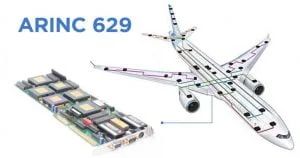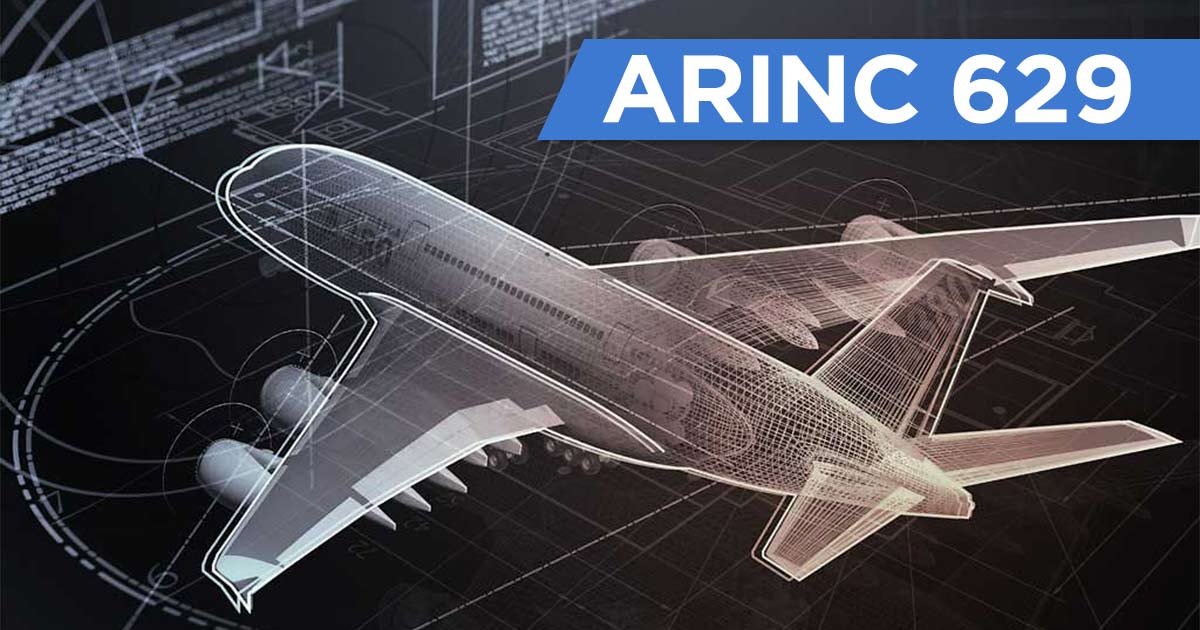The ARINC 629 data bus is a pivotal technology in modern avionics, facilitating seamless communication between various systems within an aircraft. ARINC (Aeronautical Radio, Incorporated) standards are essential for ensuring interoperability and reliability in the complex environment of aircraft systems.
ARINC 629, in particular, represents a significant advancement over its predecessor, ARINC 429, offering enhanced data transfer capabilities and improved network architecture.
The inception of ARINC 629 marked a crucial turning point in avionics communication, driven by the increasing demands for higher data bandwidth and more sophisticated aircraft systems. Its development involved collaboration among key stakeholders in the aviation industry, aiming to address the limitations of earlier data bus technologies.
By enabling more efficient and reliable data communication, ARINC 629 has played a critical role in the evolution of avionics, contributing to the enhanced performance and safety of modern aircraft.
Understanding the journey of ARINC 629 from its conception to implementation provides valuable insights into the technological advancements that have shaped contemporary aviation. This exploration not only highlights the technical achievements and innovations but also underscores the collaborative efforts and strategic planning involved in bringing such a complex system to fruition. As we delve into the historical background, technical evolution, and practical applications of ARINC 629, we gain a deeper appreciation of its impact and the ongoing efforts to advance avionics communication systems.

Historical Background
A. Conception of ARINC 629
- The conception of ARINC 629 stemmed from the growing need for a more sophisticated and efficient communication system within aircraft.
- During the late 1970s and early 1980s, the aviation industry was witnessing rapid technological advancements, which required data buses capable of handling increased data loads and more complex interactions between various avionics systems.
- The existing ARINC 429, while reliable, had limitations in terms of data rate and the number of devices it could support on a single bus, leading to a push for a more advanced standard.
- The primary motivation behind developing ARINC 629 was to overcome these constraints and create a system that could support the burgeoning demands of new aircraft technologies.
- This new standard aimed to provide higher data transfer rates, greater flexibility, and enhanced fault tolerance, ensuring that it could meet the needs of next-generation aircraft.
B. Early Development Stages
- The early development of ARINC 629 was marked by extensive collaboration among leading aerospace manufacturers, airlines, and avionics suppliers.
- Key stakeholders included Boeing, Airbus, and other major players in the aviation industry who recognized the necessity of a more capable data bus.
- These stakeholders worked closely with ARINC, the organization responsible for developing and publishing aviation standards, to outline the requirements and objectives for the new data bus.
Initial research and development efforts focused on identifying the technical specifications that would address the shortcomings of ARINC 429. This involved detailed studies of data communication needs, system architecture, and potential solutions. The development team conducted simulations and prototypes to test various approaches, ultimately converging on a design that balanced performance, reliability, and complexity.
C. Development Phases
- The development of ARINC 629 progressed through several phases, each characterized by rigorous testing and iterative improvements.
- The early prototypes underwent extensive laboratory testing to evaluate their performance under different conditions and to identify any potential issues.
- Feedback from these tests informed subsequent design refinements, ensuring that the final standard would meet the high reliability and safety standards required in aviation.
During the mid-1980s, the development team focused on field testing, integrating ARINC 629 into actual aircraft systems to assess its performance in real-world scenarios. These tests were crucial for validating the standard’s robustness and compatibility with existing avionics. The field trials involved a range of aircraft types and operational conditions, providing a comprehensive evaluation of the new data bus.
D. Standardization
- The culmination of these efforts was the formal standardization of ARINC 629. After thorough testing and validation, the finalized specifications were submitted for approval.
- In 1995, ARINC officially published the ARINC 629 standard, marking its readiness for widespread adoption in the aviation industry.
- This standardization process ensured that ARINC 629 met the stringent requirements for avionics communication systems and could be reliably implemented across various aircraft platforms.
The approval and publication of ARINC 629 represented a significant milestone in the evolution of avionics data buses. It not only provided a robust solution to the challenges posed by earlier standards but also laid the groundwork for future advancements in aircraft communication systems. The adoption of ARINC 629 by major aircraft manufacturers underscored its importance and effectiveness, paving the way for its integration into some of the most advanced aircraft in service today.
Technical Evolution
The technical evolution of ARINC 629 represents a significant leap in avionics data bus technology, addressing the limitations of earlier standards and meeting the demands of modern aircraft systems. This section delves into the design objectives, development phases, and the standardization process that shaped ARINC 629 into the robust communication protocol it is today.
A. Design Objectives
The primary goals of ARINC 629 were to enhance data transfer rates, improve network flexibility, and ensure greater fault tolerance compared to its predecessor, ARINC 429. The design objectives were carefully defined to meet the increasingly complex requirements of advanced avionics systems:
- Higher Data Transfer Rates: One of the key improvements was the need for higher data throughput. ARINC 629 supports data rates up to 2 Mbps, significantly higher than ARINC 429’s maximum of 100 kbps.
- Multicast Capability: Unlike ARINC 429, which is a point-to-point communication protocol, ARINC 629 supports a multicast capability, allowing multiple devices to communicate on the same bus, reducing wiring complexity and weight.
- Enhanced Flexibility: The new standard aimed to support a more flexible network configuration, accommodating the dynamic requirements of modern avionics systems.
- Improved Fault Tolerance: Ensuring system reliability was paramount. ARINC 629 incorporated mechanisms for error detection and recovery to maintain robust communication even in the presence of faults.
B. Development Phases
The development of ARINC 629 was a meticulous process involving several key phases:
- Research and Conceptualization: Initial efforts focused on researching existing technologies and conceptualizing a new data bus that could meet future needs. This phase involved extensive simulations and theoretical studies to establish the feasibility of proposed solutions.
- Prototyping and Testing: Early prototypes of ARINC 629 were built and subjected to rigorous testing in both laboratory and field environments. These tests aimed to identify potential issues and validate the performance of the data bus under various conditions.
- Iterative Improvements: Feedback from testing led to iterative refinements of the ARINC 629 specifications. This phase ensured that the final design addressed all identified shortcomings and met the desired performance criteria.
- Field Trials: The data bus was integrated into actual aircraft systems for field trials. These real-world tests were crucial for assessing the robustness and compatibility of ARINC 629 with existing avionics systems.
C. Standardization
After extensive testing and validation, ARINC 629 was ready for formal standardization. The standardization process involved finalizing the technical specifications and obtaining approval from relevant regulatory bodies and industry stakeholders. In 1995, the ARINC 629 standard was officially published, marking a significant milestone in avionics communication technology.
The publication of ARINC 629 provided the aviation industry with a comprehensive and reliable data bus standard that could be widely adopted. Major aircraft manufacturers, such as Boeing and Airbus, quickly recognized the benefits of ARINC 629 and integrated it into their new aircraft designs.
D. Network Architecture and Operation
ARINC 629 employs a unique network architecture that allows for efficient and reliable communication between multiple devices on the same bus. The following image illustrates the basic architecture of an ARINC 629 network:
The network consists of a bus controller, remote terminals, and a bus monitor. Each device on the bus can transmit and receive data, enabling a flexible and dynamic communication environment. The data transfer mechanism is based on a distributed control protocol, ensuring that no single point of failure can disrupt the entire network.
E. Performance Metrics
The performance of ARINC 629 is evaluated based on several key metrics:
- Reliability: The error detection and correction mechanisms ensure high reliability, essential for safety-critical avionics applications.
- Efficiency: The multicast capability and high data rates contribute to efficient data communication, reducing delays and improving overall system performance.
- Scalability: ARINC 629 supports a scalable network architecture, accommodating the increasing number of devices and data load in modern aircraft.
Implementation in Avionics
The implementation of ARINC 629 in avionics represents a significant advancement in aircraft communication systems. This section explores how ARINC 629 has been integrated into aircraft, the network architecture it employs, and its performance metrics, illustrating its impact on modern aviation.
A. Integration into Aircraft Systems
ARINC 629 was first introduced in commercial aircraft with the Boeing 777, setting a new standard for avionics communication. The system was designed to replace the older ARINC 429 standard, offering improved performance and greater flexibility.
Key aspects of ARINC 629’s integration into aircraft systems include:
- Wiring and Installation: The ARINC 629 bus architecture reduces the amount of wiring needed compared to ARINC 429. This not only lowers the overall weight of the aircraft but also simplifies installation and maintenance processes.
- Component Compatibility: The data bus was designed to be compatible with a wide range of avionics components, including flight control systems, navigation systems, and communication systems. This ensures seamless integration and interoperability among different subsystems.
- Real-Time Data Exchange: ARINC 629 facilitates real-time data exchange between various avionics systems, enhancing the overall responsiveness and efficiency of aircraft operations. This is crucial for functions that require instantaneous data updates, such as flight control and monitoring systems.
B. Network Architecture
The network architecture of ARINC 629 is designed to support multiple devices communicating over a single bus. Key components of this architecture include:
- Bus Controller: The central component that manages data traffic on the bus. It schedules data transmissions and ensures that communication remains orderly and efficient.
- Remote Terminals: These are the various avionics devices connected to the bus, such as sensors, actuators, and control systems. Each remote terminal can send and receive data, allowing for comprehensive system integration.
- Bus Monitor: A passive device that monitors data traffic on the bus for diagnostic and maintenance purposes. It helps ensure the integrity of the communication network by detecting errors and potential faults.
C. Data Transfer Mechanisms
ARINC 629 employs a distributed control protocol, which allows multiple devices to share the communication bus without central arbitration. This protocol uses a time-division multiplexing approach, where each device is assigned specific time slots for data transmission. Key features of the data transfer mechanism include:
- Token Passing: Devices take turns transmitting data by passing a token. Only the device holding the token can transmit, preventing data collisions and ensuring orderly communication.
- Dynamic Allocation: Time slots can be dynamically allocated based on the priority and urgency of data, allowing for efficient use of the bus and timely transmission of critical information.
- Error Handling: ARINC 629 includes robust error detection and correction mechanisms. Data packets are checked for integrity, and errors are corrected automatically, ensuring reliable communication.
D. Performance Metrics
The performance of ARINC 629 is evaluated based on several key metrics:
- Reliability: The error detection and correction mechanisms, along with the redundant architecture, ensure high reliability. This is essential for safety-critical avionics applications where data integrity is paramount.
- Data Transfer Rate: ARINC 629 supports data rates up to 2 Mbps, significantly higher than ARINC 429. This high data rate accommodates the increasing data loads of modern avionics systems.
- Flexibility and Scalability: The multicast capability and distributed control protocol provide flexibility and scalability. This allows ARINC 629 to support a wide range of devices and communication needs, from simple sensors to complex flight management systems.
E. Case Studies
Boeing 777: The Boeing 777 was the first aircraft to fully implement ARINC 629, utilizing its advanced communication capabilities to enhance flight control, navigation, and monitoring systems. The success of ARINC 629 in the 777 demonstrated its reliability and effectiveness, paving the way for its adoption in other aircraft.
Other Aircraft Implementations: Following the success of the Boeing 777, ARINC 629 has been adopted in other aircraft models, including the Airbus A380 and Boeing 787. These implementations have further validated the benefits of ARINC 629, such as improved data management and reduced wiring complexity.
Advantages and Limitations
A. Advantages
ARINC 629 offers numerous advantages over its predecessor, ARINC 429, and other avionics communication standards. These benefits have made it a preferred choice for modern aircraft systems, contributing to enhanced performance, reliability, and flexibility.
Increased Data Bandwidth:
- Higher Data Rates: ARINC 629 supports data rates up to 2 Mbps, which is significantly higher than the maximum 100 kbps supported by ARINC 429. This increased bandwidth allows for the transmission of more data at faster speeds, accommodating the growing data requirements of advanced avionics systems.
- Efficient Multicast Communication: The ability to multicast means that a single data message can be sent to multiple devices simultaneously, improving the efficiency of data communication and reducing the overall bus load.
Enhanced Network Flexibility:
- Distributed Control Protocol: ARINC 629 uses a distributed control protocol, where multiple devices share the bus and communicate without central arbitration. This allows for more dynamic and flexible network configurations compared to the point-to-point communication of ARINC 429.
- Dynamic Time Slot Allocation: Time slots for data transmission can be dynamically allocated based on the priority and urgency of the messages. This flexibility ensures that critical data is transmitted promptly, enhancing overall system responsiveness.
Improved Fault Tolerance:
- Error Detection and Correction: ARINC 629 incorporates robust error detection and correction mechanisms, which ensure the integrity and reliability of data communication. This is crucial for maintaining the safety and performance of avionics systems.
- Redundant Architecture: The architecture of ARINC 629 can be designed with redundancy to enhance fault tolerance. In the event of a failure in one part of the system, backup components can take over, ensuring continuous operation.
Reduction in Wiring Complexity:
- Simplified Wiring: By supporting multiple devices on a single bus and enabling multicast communication, ARINC 629 reduces the amount of wiring required. This not only lowers the weight of the aircraft but also simplifies installation and maintenance, leading to cost savings and improved operational efficiency.
B. Limitations
Despite its many advantages, ARINC 629 also has some limitations that need to be considered. These limitations can impact its implementation and performance in certain scenarios.
Complexity of Implementation:
- Design and Integration Challenges: The distributed control protocol and dynamic time slot allocation add complexity to the design and integration of ARINC 629 systems. This requires careful planning and engineering to ensure optimal performance and reliability.
- Higher Development Costs: The complexity of ARINC 629 can lead to higher development and implementation costs compared to simpler communication standards. This can be a significant consideration for aircraft manufacturers and operators.
Compatibility Issues:
- Legacy Systems: Integrating ARINC 629 with existing legacy systems based on ARINC 429 or other standards can be challenging. Compatibility issues may arise, requiring additional interfaces or conversion systems, which can add to the overall complexity and cost.
- Training and Expertise: The adoption of ARINC 629 requires specialized knowledge and expertise. Training personnel and ensuring that maintenance teams are proficient in handling the new system can be a significant undertaking.
Cost Considerations:
- Initial Investment: The initial investment required for implementing ARINC 629 can be substantial. This includes the cost of new equipment, training, and integration with existing systems. For some operators, the financial outlay may be a barrier to adoption.
- Maintenance and Upgrades: Ongoing maintenance and potential future upgrades of ARINC 629 systems can also be costly. Ensuring long-term support and updates to keep the system current with evolving technologies and standards is an ongoing financial consideration.
Scalability Limitations:
- Network Size: While ARINC 629 is designed to support multiple devices on a single bus, there are practical limits to the number of devices that can be effectively managed. As the network grows in size and complexity, ensuring efficient communication and avoiding data collisions can become more challenging.
Conclusion
The evolution of ARINC 629 from conception to implementation marks a significant advancement in avionics communication systems. Developed to overcome the limitations of ARINC 429, ARINC 629 offers higher data transfer rates, multicast capabilities, and improved fault tolerance, making it vital for modern aircraft.
The development journey of ARINC 629, driven by the need for more sophisticated and data-intensive avionics systems, involved extensive research, prototyping, and rigorous testing. Its successful implementation in aircraft like the Boeing 777 demonstrated its practical benefits and set a precedent for wider adoption.
Technically, ARINC 629’s distributed control protocol and dynamic time slot allocation provide a flexible and efficient network architecture, supporting seamless integration of multiple systems. However, its complexity and higher initial costs present challenges that need careful management.
ARINC 629’s advantages, such as increased data bandwidth, network flexibility, and reduced wiring complexity, enhance aircraft performance and operational efficiency. Conversely, its implementation complexity, higher costs, and potential compatibility issues are notable limitations.
In summary, ARINC 629 represents a critical advancement in avionics, supporting the sophisticated systems of modern aircraft. Balancing its benefits with the inherent challenges will be crucial for its successful implementation in future aviation technologies.






